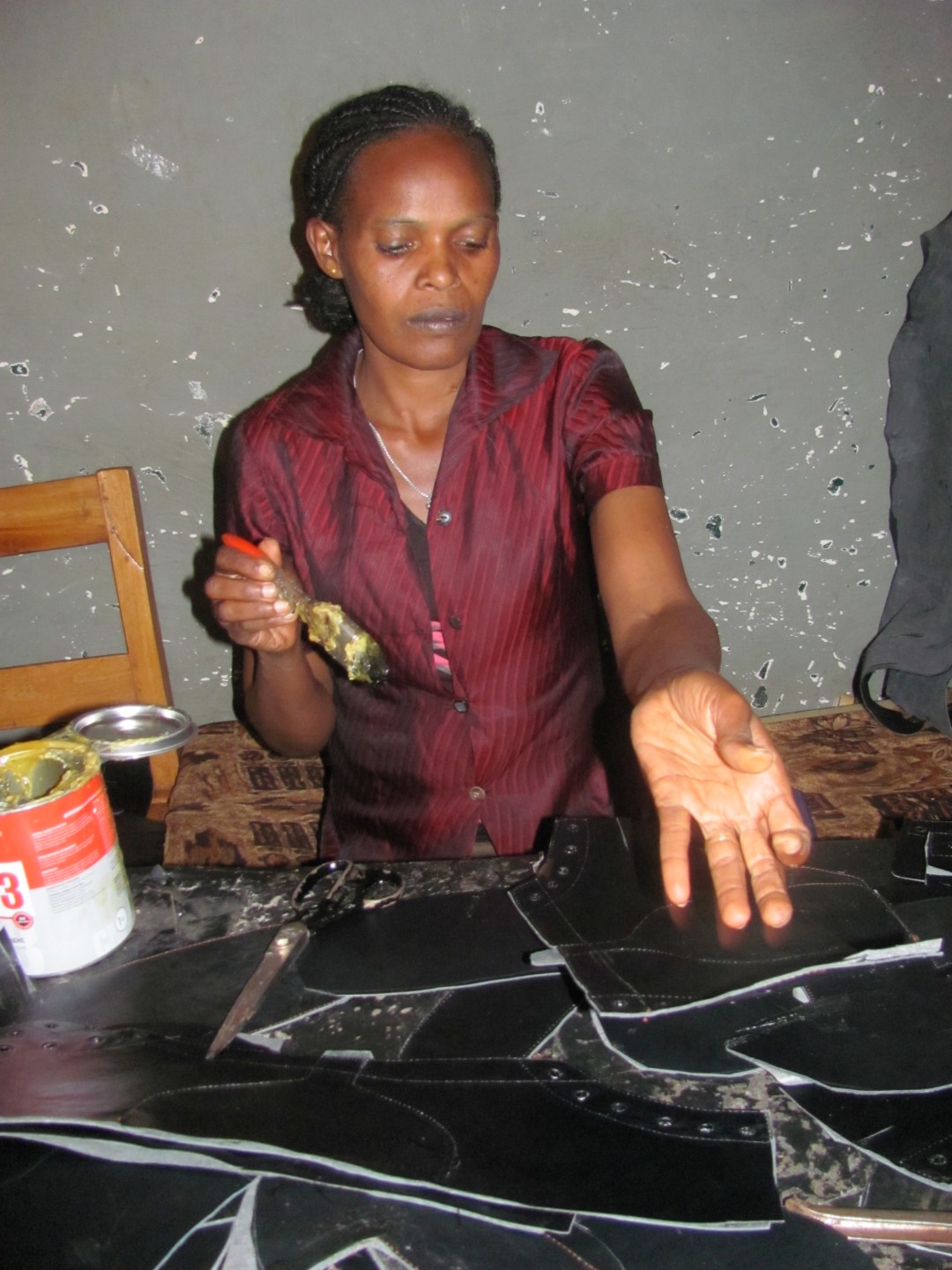Shoes for podoconiosis patients
The prevention and treatment of podoconiosis in Ethiopia is complimented by the production of large sized shoes, specially adapted to patients. The objective of the project was to increase the production of shoes from 3,000 to 5,400 pairs a year for patients suffering from advanced podoconiosis, through the following actions: increasing the number of shoemakers from 6 to 11, purchasing two additional sewing machines, and renting additional workspace in Sodo to accommodate the team of shoemakers and their machines.
The project’s main objective was achieved. In total, thirteen shoemakers, two more than expected, followed a three month training program and were employed by the MFTPA. These thirteen shoemakers, themselves former patients, moved to the new larger premises in Wolaita Sodo. Only one heavy duty sewing machine for leather could be purchased during the first year because of the high inflation rate in Ethiopia. Inflation also doubled the price of raw materials (leather, soles, glue) which led to a lower number of shoes being produced (10,611 pairs of shoes instead of 16,200).
The Mossy Foot Treatment and Prevention Association (MFTPA) based in the south of Ethiopia has been active in the treatment and prevention of podoconiosis, a highly debilitating disease since 1999.

Ethiopia
Population
105 million (2017)
Per Capita Income
USD 740/year (2017)
Poverty rate *
23% (2015)
Literacy rate
39% (2016)
Human Development Index
173rd out of 189 countries (2018)
Ethiopia is the second most populated country in Sub–Saharan Africa and one of the world’s poorest countries. Although economic growth is hindered by chronic food insecurity, it has enabled positive trends in reducing poverty, in both urban and rural areas. The absolute poverty rate dropped from 46% in 1995 to 8.7% 2016. Over the past 20 years, primary school enrolment has quadrupled, child mortality has been halved and access to clean water has doubled. Good progress has also been made in the fight against malaria and HIV/AIDS. The country is home to the largest refugee population on the continent (730,000 registered refugees), putting additional pressure on natural resources suffering from climate-related shocks.
Sources: World Food Program, UNICEF, World Bank, 2016 Human Development Report, Human Development Indices and Indicators (2018 Statistical Update)
*The percentage of the population living below the national poverty line.